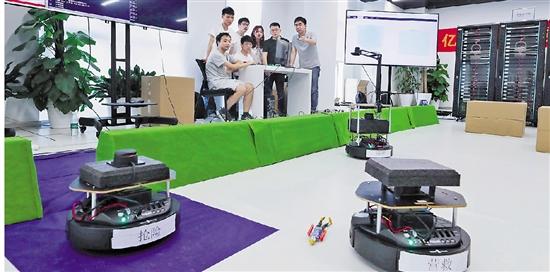World's largest brain-like computer developed in Zhejiang

Researchers from Zhejiang University (ZJU) and the Zhejiang Lab test out an emergency rescue operation using robots powered by Darwin Mouse. [Photo/ zj.zjol.com.cn]
A research team from Zhejiang University (ZJU) and the Zhejiang Lab officially unveiled Darwin Mouse, China's first-ever brain-like computer that uses domestically designed brain-like chips, at a press conference in Hangzhou, capital of Zhejiang province, on Sept 1.
Darwin Mouse is currently the world's largest brain-like computer in terms of number of artificial neurons. A total of 792 Darwin 2 Neural Processing Units (NPUs), ZJU's self-designed brain-like chips, are installed in the computer to support its 120 million artificial neurons and nearly 100 billion synapses – equivalent to the number in a mouse's brain.
The research team has also developed DarwinOS, an operating system for brain-like computers.
According to Pan Gang, ZJU professor and head of the research team, neuromorphic computing, a pioneering computer science field, imitates the structure and operating mechanisms of a real brain's neural network through hardware and software, constructing a brand new artificial intelligence system. Compared with traditional computers, neuromorphic computers, or brain-like computers, can perform more complicated tasks and use less power.
The research team has successfully applied Darwin Mouse in a number of scenarios, including working with multiple robots to fight floods and carry out emergency rescues.
Scientists believe that brain-like computers could be implanted in cellphones and robots in the future to expand the possibilities of artificial intelligence in daily life. Brain-like computers can also serve as powerful simulation tools in neuroscientists' experiments to explore how brains function.
-
Foreign teacher, Hangzhou students capture picturesque countryside
August 9, 2023
-
Hangzhou Asian Games launch 50-day-to-go campaign
August 4, 2023
-
Hangzhou achieves 6.9% GDP growth in H1 2023
July 27, 2023



